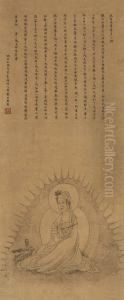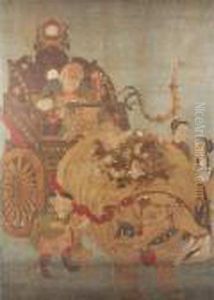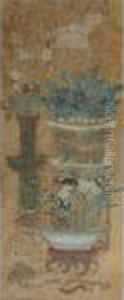Wan Shouqi Paintings
Wan Shouqi was a notable Chinese painter and calligrapher during the late Ming and early Qing dynasties. Born in 1592 in Jiading, which is now part of Shanghai, Wan was a versatile artist, skilled in both painting and the art of calligraphy. His life spanned a tumultuous period in Chinese history, marked by the fall of the Ming dynasty and the establishment of the Qing dynasty. Despite the political upheavals of his time, Wan Shouqi managed to leave a significant mark on the art world.
Wan Shouqi's artistic style is often characterized by its elegance and refinement. He excelled in the traditional Chinese painting genres of landscapes, flowers, and birds, bringing a unique touch to each of his creations. His paintings are known for their meticulous detail, vibrant expressions of nature, and the harmonious balance between form and space. Wan was not just a follower of the traditions that preceded him but also an innovator who infused his works with a personal stamp that was both subtle and profound.
In addition to his painting, Wan Shouqi was also recognized for his calligraphy, which was highly valued for its fluidity and grace. His script was versatile, capable of embodying the strength and vigor of the more ancient styles as well as the more immediate and expressive qualities sought after in his era. Wan's artworks, both in painting and calligraphy, were highly sought after by the collectors and connoisseurs of his time, and they continue to be admired for their aesthetic qualities and historical significance.
Despite the wealth of talent Wan Shouqi possessed, detailed records of his life are somewhat scarce, a common issue for many artists of his period. However, his surviving works speak volumes about his skill and the esteem in which he was held by his contemporaries. After his death in 1642, Wan Shouqi's legacy continued to influence the development of Chinese art, serving as an inspiration for future generations of artists. His works are preserved in several major museums and collections worldwide, where they stand as a testament to the enduring appeal of traditional Chinese art.


